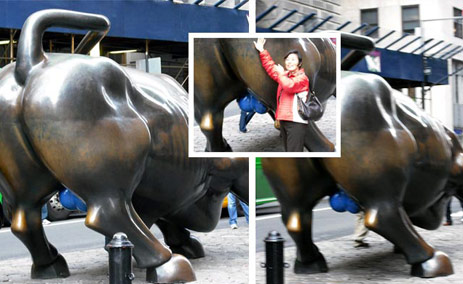The Indian black economy is immense, lucrative, widespread, and has grown significantly since independence. According to Kumar (2001, 2), the black economy has grown from about 3% in the mid-50s to 20% by 1980, to 35% by 1990, and 40% by 1995. As a percentage of GDP and at almost $1 trillion in absolute terms, the black economy is larger than both the industrial and agricultural sectors. Corruption is pervasive from the lowest to the highest levels of public administration, public enterprise, bureaucracy, judiciary, law enforcement, and elected leadership. According to Transparency International’s Global Corruption Barometer 2007 report, 25% of survey respondents had to pay a bribe to obtain government services, over four-out-of-five believe that political parties are corrupt, and more than 70% expect the level of corruption to increase in the coming three years.
The documented history of corruption in India can be traced to late 18th century British East India company rule. The first governor-general of India, Warren Hastings was notably impeached on accounts of corruption in 1787. Though he was acquitted in 1795, his lengthy trial brought various aspects of illegitimate company activity to light. Brian Smith of Georgetown University (2008) writes, "too much ill-gotten wealth had made its way home from India; too many of Hastings' compatriots and defenders were in the House of Commons". The East India Company laid the foundations of both a corrupt bureaucracy and a parallel economy. During World War II, this black economy experienced a surge (Financial Express, 2007). When large quantities of products and resources were allocated to the war effort, the general public experienced acute shortages of daily necessities. Scarcity, government controls, and private hoarding stimulated the growth of the parallel economy. Even though in both periods the black economy made up only a small fraction of its present size, the institutional and social practices that would facilitate its rise were developed then.
The most significant growth in the black economy occurred during and after the 1960s. Until this time, Gandhian and Nehruvian politicians who had been part of the independence struggle had largely administered the government. As their careers ended, officials who lacked their idealism, and were more likely to engage in corruption and rent-seeking practices, entered the government. According to Sondhi (2000), the keynote of this "great divide in the history of public administration in India" was amorality.
Today, corruption pervades the political leadership, the bureaucracy, law enforcement and the judiciary. Some of the most prominent causes have been patron-client relationships and communalism in the democracy, excessive bureaucratic administration and low wages at the bottom rung of public sector employment, ineffective punitive and combative measures, and a social environment conducive to corrupt practices.
Since the sixties, a new brand of electoral politics has seen leaders succeed who cater to specific regional, caste, religious, or linguistic communities as well as distinct private lobbies. In order to be reelected in a divisive environment, officials hand out benefits to private supporters and client communities. Nepotism in the allocation of government contracts and the siphoning-off of public sector funds occur on a large scale. For example, public sector real estate plots are taken over by individual politicians who then sell them at preferential rates to family members, campaign contributors, and other supporters in a process that is called "writing down". Democratic corruption is further compounded by rampant electoral malpractice, which undermines the legitimacy of the participatory process. Vote buying and voter coercion, political thuggery and warlordism are commonplace. Corruption exists throughout the political realm from the local district level, to the state level, to the national level, to the Prime minister's office - as Sondhi (2000) writes, "the scams and scandals of the nineties revealed that among the persons accused of corruption were former Prime Ministers, former Chief ministers, and even former Governors."
During the sixties the development of a second factor also impacted corruption. Private sector wages and relative social prestige, particularly at the lower levels, grew faster than those of the public sector, generating incentive for corruption. According to The Times of India, the monthly payscale for police constables in 2006 was between Rs. 3,050 and 4,590 (aprox. between U.S. $72 and $108) in the state of Maharashtra. Even in India such wages are too low to guarantee a dignified life, forcing constables to turn to bribes. Therefore, it is common for well-off individuals to buy their way out of arrest. Additionally, the colonial legacy of an extensive administrative network facilitates the spread of corrupt activity in the bureaucracy, judiciary, and law enforcement. According to Sondhi, "the British had designed this legal system to strengthen a regulatory colonial administration...It has built in provisions for delays, prolonged litigation, and evasion. Its provisions are ideally suited to the promotion of corruption at all levels."
Insufficient wages are generally characteristic of the lower levels of bureaucracy, and hence most simple government services require bribing to be obtained. Many bureaucrats see their salaries as pocket money, while their actual incomes are determined by illegitimate means. Even in prestigious civil services like the Indian Administrative Service (IAS) and Indian Revenue Service (IRS) that require entrance examinations, salaries are significantly lower than private sector alternatives. Corruption income is often taken into account when bright individuals choose the civil services over the private sector.
Observing this problem from a broader perspective: widespread corruption has generated social attitudes that no longer view it as morally wrong, but as normal. High degrees of corruption in the police and judicial system, and among elected officials have contributed to a collective disregard for the rule of law. "People often approach someone known to them for favors which they know are not legally due to them. Jumping the traffic lights or a queue or getting the benefits not due to one has become part of social ethos" (Sondhi 2000). A vicious cycle has been created where corruption has found social acceptance, and this attitude leads to an even greater number of officials becoming corrupt. Thus, rising corruption is a consequence of its own universality.
The consequences of corrpution, and particularly its economic impact, are powerful. In theory, countries where talented people are allocated to rent-seeking activities tend to grow more slowly (Mauro 1995). Mauro finds that if the integrity and efficiency of bureaucracy in developing countries were to be improved, their investment and GDP growth rates would rise significantly. Controlling for GDP per capita, he concludes that corrupt governments spend less on education, and therefore achieve lower levels of human capital formation. According to Mauro, if corruption in India was reduced to Scandanavian levels, investment would rise by 12% annually and GDP would grow at an additional 1.5%.
The Indian black economy has resulted in an immense loss of tax revenue. If it accounted for 40% of GDP in 1998-99, the loss of direct tax revenue at the prevailing rate would amount to at least Rs. 200,000 crore, or 47.5 billion U.S. Dollars (Kumar 1999, 5). According to the BBC (2004), only 2 million of India's billion people pay taxes, just 2% of the population. The government therefore suffers a perennial shortage of funds and public services languish. To make matters worse, public services and public enterprises are themselves extremely corrupt - the Public Works Department and the State Electricity Boards that are responsible for the provision, maintenance, and distribution of infrastructure and energy respectively, are among the most corrupt departments in India. "In the capital city of Delhi itself the transmission and distribution losses in the power sector are estimated to be over 50%, out which almost 30% is attributed to theft which is done with the connivance of the electricity board employees" (Sondhi 2000). Due to corruption, public sector enterprises appear to be inefficient and making large losses. In 1991, they lost over Rs. 30,000 crore, or $7.1 billion due to corruption; if not for illegal activity, profit margins would have been 30% as opposed to the reported 5% (Kumar 1999, 4)
Black incomes also form a major tax on investment. Rather than being spent and injected into the economy, they tend to be mostly saved. Furthermore, these savings tend to be concentrated in areas that do not further investment. Black money tends to be laundered in destabilizing speculative bubbles such as real estate and gold, or deposited outside the country. Income from corruption constitutes a significant leakage from the economy, amounting to a tax on investment of almost 20 percentage points (Sondhi, 2000).
Given the magnitude of corruption and its consequences, it is imperative that the problem is dealt with immediately. The government has already developed a number of agencies to deal with the problem such as the Prevention of Corruption Act (1947), Central Bureau of Investigation (CBI), Administrative Vigilance Division (AVD), and Central Vigilance Comission (CVC). However, a number of these agencies are corrupt themselves, while others lack the expertise to function effectively. I believe that a carrot and stick approach must be used to combat corruption. That is, the monetary incentive for corruption must be removed, while adequate punitive measures are simultaneously implemented. Corruption has lead to a vicious cycle where it keeps tax revenue low, thus keeps public sector wages low, and therefore perpetuates itself. The government must bear the initial cost and incur a deficit to raise public sector wages and make them more comparable to the private sector, while strengthening anti-corruption bodies. Theoretically, a higher salary should make an employee content and the increased probability of prosecution should deter their corrupt practices.
Electoral reform is also necessary to restore faith in a free democratic process. Instituting stricter poll monitoring policies and replacing the inkblot voting technique with newer technology would better safeguard against malpractice. Allocating a fixed election budget for each party a-la the European Union would set somewhat of a barrier against rent seeking and patron-client politics.
The media and civil society are important entities that should also be urged to expose corrupt practices. In the past, the media has exposed numerous profile cases, such as the Tehelka scandal, however less sensational corruption is left unreported. According to Kumar (1995), media entrepreneurs have interests that require favorable policy decisions and journalists have to be careful not to hurt these interests. Independent organizations however, have been more vigilant in their watch over corruption. Guhan and Paul (1997) state that the Public Affairs Center in Bangalore has developed innovative instruments, such as the report card methodology, to track down and expose corruption in the public services.
The primary obstacle to implementing stricter controls over corruption is the general social climate. If society continues to accept the normality of corruption, politicians will not be pressed to implement counter-measures. The costs of corruption can be fundamentally raised through the democratic process. Voting against corrupt politicians will ensure that those in power will reduce their own illegal practices and take steps against corruption to garner votes. But until social attitudes change, necessary legislation will not be implemented to deal with the problem.
Works Cited
Aidt, T. S. "Economic Analysis of Corruption." The Economic Journal 113 (2003): f632-f652.
Biswas, Soutik. "Reforming India's Maddening Tax System." BBC News 5 July 2004.
.
Guhan, S., and S. Paul. Corruption in India. New Delhi: Sage, 1997.
Guhan, S., and S. Paul. Corruption in India. New Delhi: Sage, 1997.
Khan, Mushtaq H., and Jomo K.S. Rents, Rent-Seeking and Economic Development. Cambridge: Cambridge UP, 2000.
Kumar, Arun. The Black Economy in India. New Delhi: Penguin Books Ltd., 1999.
Mauro, Paolo. "Corruption and Growth." The Quarterly Journal of Economics 110 (1999): 681-712.
"Pay Hike for Maharashtra Police." The Times of India 17 Oct. 2006. .
Smith, Brian. "Edmund Burke, the Warren Hastings Trial, and the Moral Dimension of Corruption." Polity 40 (2008): 70-94.
Sondhi, Sunil. Combatting Corruption in India. University of Delhi. Prepared for the XVIII World Congress of International PoliticalScience Association, August 1-5, 2000, Quebec City, Canada, 2000.
"The Parallel Economy in India." Financial Express 2 May 2007. .




































